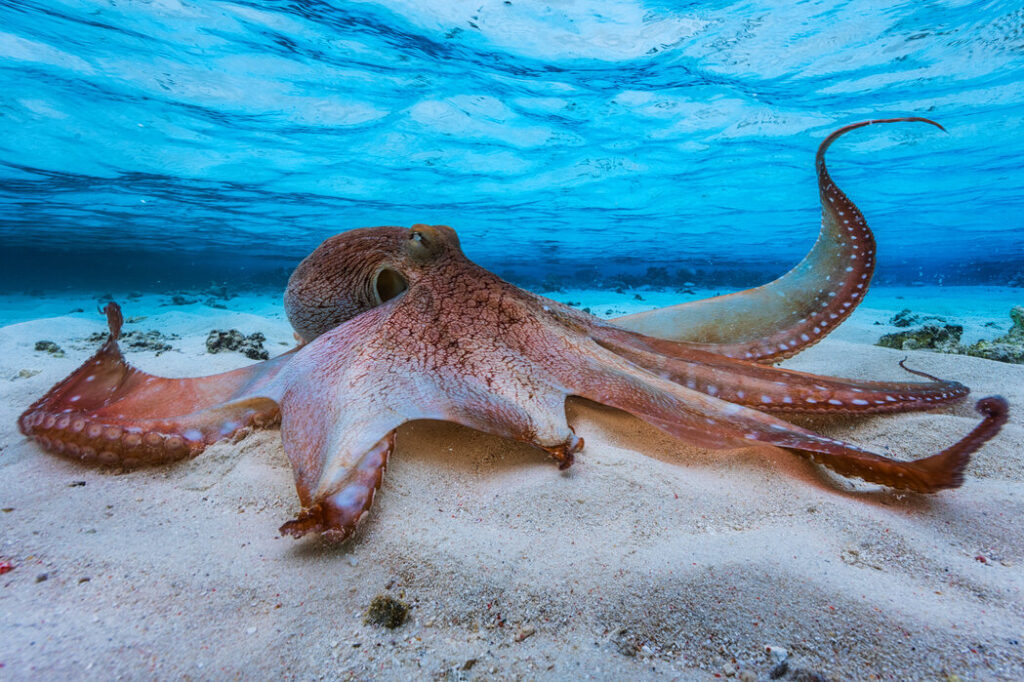Unraveling Nature’s Enigma: Researchers Decode the Secrets of an Unprecedented Gathering of Over 6,000 Octopuses, Coalescing Around an Extinct Pacific Sea Volcano.
Octopuses tend to live alone, which might seem a bit lonely considering all those arms they have for potential hugs. However, off the coast of California, there’s an exceptional discovery – the largest gathering of deep-sea octopuses ever found. Nell Greenfieldboyce reports on the intriguing world of this real-life octopus community.
Beneath the Pacific Ocean lies the Davidson Seamount, an extinct volcano. Jim Barry from the Monterey Bay Aquarium Research Institute recalls a recent exploration where a submersible delved into the hills at the mountain’s base.
As the vehicle navigated through the dark depths, the headlights revealed a fascinating sight: a few purple octopuses tending to nests of eggs. Yet, the real surprise came when they stumbled upon a massive congregation of octopuses – thousands upon thousands.
The explorers also noticed something unique – a shimmering effect in the water. Further investigation revealed warm water emanating from a thermal spring.
Barry and his team dedicated months to understanding the significance of this warmth to the octopuses. They meticulously mapped an area equivalent to a couple of football fields.
Their findings were remarkable – they identified around 6,000 animals in this small zone, estimating that up to 20,000 octopuses might inhabit the area. Through monitoring egg development, nest guarding, and water temperature checks, they concluded that the females exclusively nest in these warm sites. Cold waters seemed devoid of such nesting behaviors.
The warmth likely accelerates egg maturation. In their publication in Science Advances, the research team revealed that these octopuses spend almost two years safeguarding their eggs before hatching. While it may sound lengthy, researcher Beth Orcutt points out that this is actually quite rapid compared to other deep-sea octopuses, which have brooding times of at least four years.
Orcutt, associated with the Bigelow Laboratory for Ocean Sciences, applauds the detailed observations at the California site. She emphasizes the advantage these octopuses gain by brooding in warmer waters, a finding also supported by her studies of smaller octopus gatherings near warm water seeps off Costa Rica.
This discovery underscores the significance of these isolated pockets of warmth on the ocean floor. Such spots, though often overlooked, are crucial for creatures navigating the cold, dark depths in their quest for survival.
